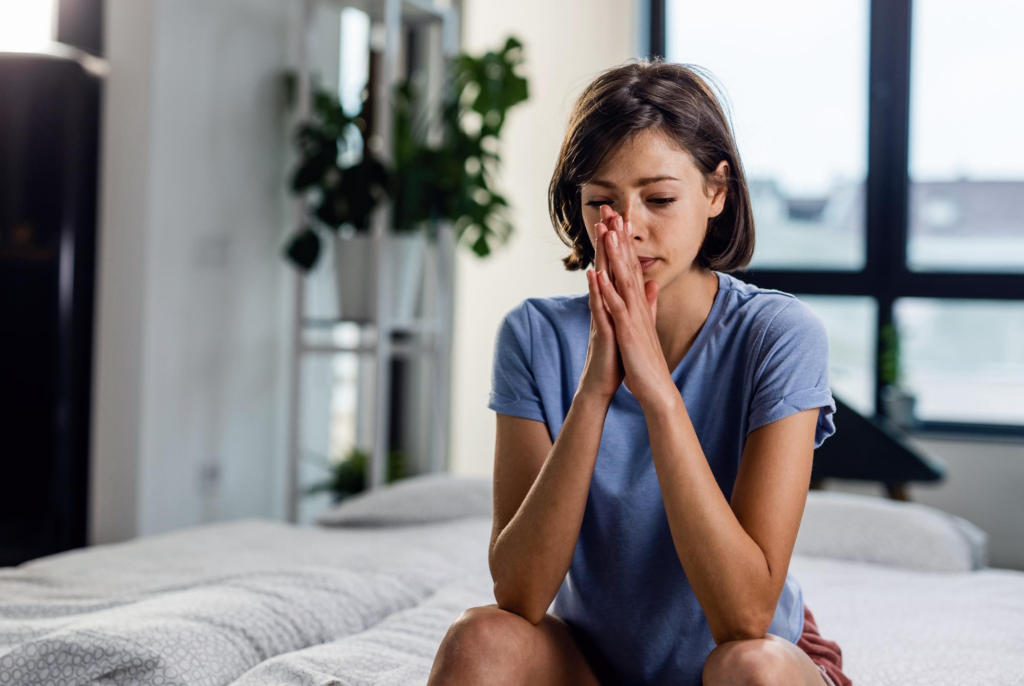Introduction
Anxiety is a common mental health condition experienced by many people around the world. Everyone gets anxious sometimes, but for some, the worry goes beyond stressful moments, affecting their daily life. Today’s high-pressure, always-online lifestyle doesn’t help. More people are feeling the weight of anxiety. It affects kids, adults, everyone. Understanding what anxiety is, recognizing its signs, and knowing how to cope with it is important. This discussion will help you unpack what anxiety looks like and guide you in managing it. Remember, addressing anxiety head-on is a powerful step towards a healthier, stress-managed life. Now, let’s dive in further to understand this condition.
Demystifying Anxiety
Anxiety is more than just feeling nervous about a big event. It’s a constant state of worry that doesn’t go away. Unlike stress, which usually has a trigger, anxiety can feel heavy and persistent. There are different forms of anxiety. Generalized Anxiety Disorder (GAD) means lots of worry about everyday things. Panic Disorder involves sudden feelings of terror that hit without warning, referred to sometimes as an anxiety attack. These can cause shortness of breath or a pounding heart. Statistics show alarming trends. In India, anxiety rates are rising rapidly as more people report feeling overwhelmed by life’s demands. Globally, millions are affected, bringing attention to this growing mental health issue. Understanding the various facets of anxiety is key to addressing and managing it effectively.
Identifying Symptoms of Anxiety and Depression
Being able to spot symptoms of anxiety helps in early intervention. Let’s look at a checklist for anxiety symptoms:
- Physical Symptoms: Sweating, trembling, dizziness, and a racing heart.
- Emotional Symptoms: Feeling restlessness, fear, or having an uncontrollable sense of panic.
- Behavioral Indicators: Avoiding places or not trying new activities because of fear.
Self-reflection is vital in spotting these signs early on. Sometimes, anxiety overlaps with depression, creating a tricky mix. Spotting the signs of depression and anxiety is crucial. Ignoring these symptoms can lead to severe depression and anxiety symptoms later.
Causes of Anxiety
Understanding what causes anxiety helps in finding ways to tackle it. Many anxiety cases have biological and genetic roots. If someone in your family deals with anxiety, you might too. Modern life and technology play a role too. Constant notifications and an overload of info add pressure. Environmental and social factors like a stressful work environment, relationship troubles, or peer pressure contribute heavily. These modern stressors, combined with personal vulnerabilities, exacerbate anxiety levels.
Impact of Anxiety on Daily Life
Anxiety doesn’t just tug at mental health; it shapes everyday life. At work, it can lower efficiency, making focus hard and hurting career progression. It might cause someone to skip new opportunities or feel overwhelmed by tasks. Relationships suffer too, as anxiety can make social interactions tense. Sometimes, it’s hard to keep friendships strong when anxiety makes communication tough. On the health frontier, anxiety increases risks for headaches, sleep troubles, and more serious ailments. Keeping these impacts in mind pushes the importance of finding effective solutions and coping methods.
Holistic Healing Approaches
Turning to holistic solutions might offer relief. Meditation and mindfulness appear effective for managing anxiety symptoms. By practicing these, calm and focus slowly replace chaos. Other lifestyle changes are vital too: Eating balanced diets and sticking to exercise daily boosts our mood. Simple practices like a morning jog or joining a sports club can work wonders. Exploring Indian traditions like Ayurveda and yoga adds another dimension. These practices use natural relaxation methods that enhance mental clarity. Adopting these strategies can point you towards healthier patterns, providing tools for managing anxiety naturally.
Efficient Stress Management Techniques
Let’s look at stress management methods to reduce anxiety: – Breathing Exercises: Taking deep breaths calms tension. – Journaling: Writing down thoughts releases worry. – Stress-Management Apps: Apps guide you through stress-relief tactics.
Incorporating these habits into your routine builds resilience, helping navigate tough patches effortlessly.
Seeking Professional Support
Sometimes, self-help steps aren’t enough. It’s crucial to know when professional aid is needed. Feeling stuck or overwhelmed can signal that moment. Many avenues for treatment exist. Cognitive-behavioral therapy allows individuals to work through specific patterns of thought causing distress. Medication options provide relief from severe symptoms too. Importantly, the role of mental health professionals is immeasurable. They guide treatment plans and aid recovery from debilitating states. Professional support isn’t a sign of weakness but a strong step toward reclaiming control.
Supporting Family and Loved Ones
Family support is crucial, especially when dealing with anxiety. Here’s how you can help: – Listen actively and show empathy. – Encourage open conversations about feelings. – Help find external resources that give more clarity and guidance.
These steps pave ways for deeper connections and understanding.
Conclusion
Managing anxiety is possible with the right steps. Building support through friends or professional help creates a comforting environment. Taking steps towards openly talking about mental health helps dismantle the stigma. For those seeking more guidance, there are countless resources available to steer you toward healing. You are not alone in this journey. Keep informed, stay aware, and focus on healthier routines. There’s always hope, and with the right approach, anxiety can be managed or even conquered.
